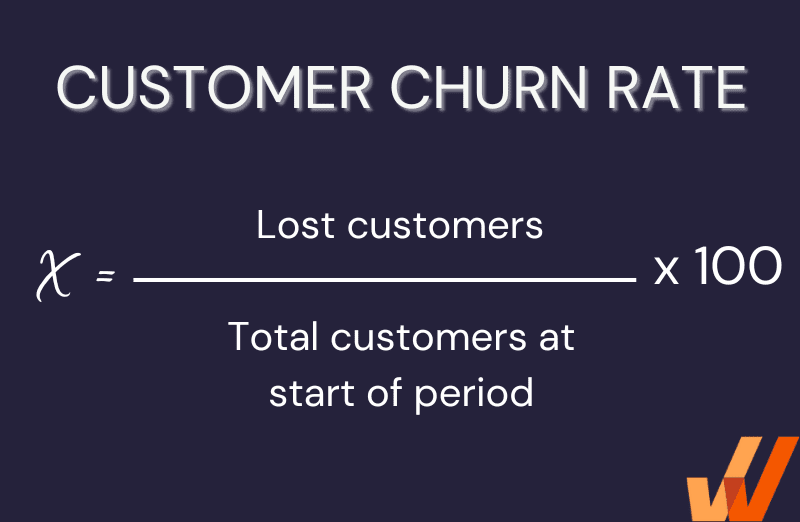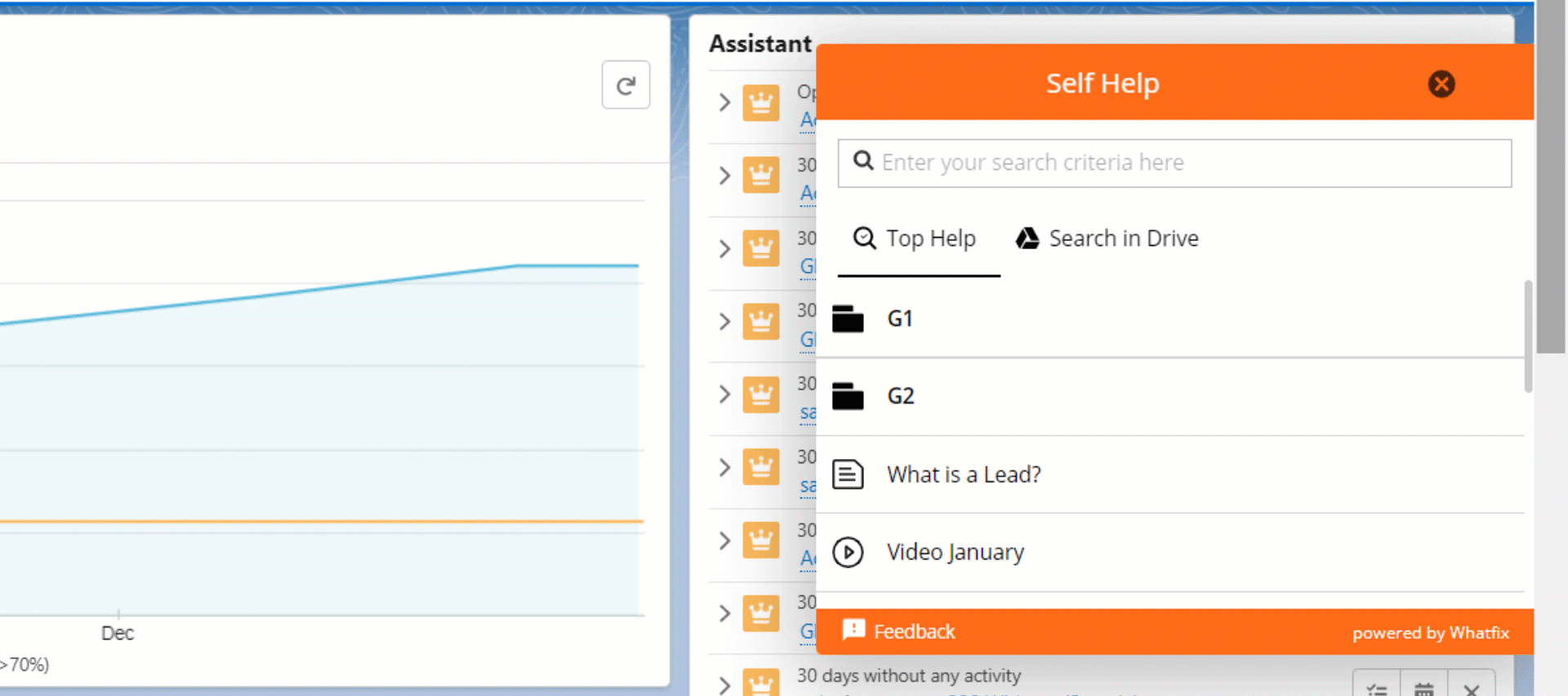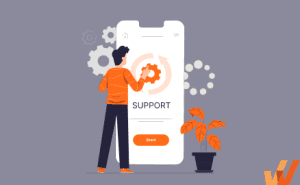Ultimate Guide to SaaS Customer Success (2024)
- July 7, 2021


The most successful software-as-a-service (SaaS) companies have one thing in common — they lead with a customer-centric approach that prioritizes customer’s needs. They’ve learned that developing deep relationships with customers isn’t just considerate; it’s necessary to drive long-term customer and revenue growth.
Customer success has become synonymous with SaaS. As soon as a customer has signed a contract, it’s time to start offering hands-on, detailed customer success that helps each customer contextually meet their outcomes and goals – or risk losing that logo when it’s time for renewals. It’s critical to continually prove to your customers that they made the right decision to do business with you.
When you proactively give your customers the right tools and information to successfully solve their problems, you significantly increase the probability your customers will stay with you for the long haul.
In this article, we’ll explore SaaS customer success, its critical role for SaaS companies, how to measure and improve it, and more.
What is Customer Success?
Customer success is the people, process, and support your company invests in to advance your customer’s goals and help them achieve the results they’re aiming to get by using your product or service.
Commonly led by a customer success manager, a customer success team is tasked with reducing customer churn and increasing customer retention by providing an exceptional experience throughout every stage of the customer relationship. They jump in when a customer gets serious about signing up for your product. Once a prospect converts, they oversee customer onboarding and training, assist with support, and offboard customers as they churn.
The underlying strategy of a customer success team is rooted in the analysis and understanding of your customer’s goals and, in turn, being proactive in helping them achieve success with your product in whatever way they can.
Customer success vs. Customer Support vs. Account Management
Customer success and customer support often overlap, but they are not the same entity.
- Customer support is issue-driven, while success is mainly goal-driven. Support is more reactive — like responding to a trouble ticket.
- Customer success teams are more proactive by seeking out potential red flags and fixing issues when a customer becomes a churn risk.
- Account management is focused on expansion. Account managers typically have a set number of accounts they’re responsible for and focus on nurturing clients through upsells and feature upgrades.
Why is it Important to Measure SaaS Customer Success?
Companies with substantial customer success grow faster by reducing the revenue decline caused by churn. Decreasing uncertainty through after-the-sale service and building deep relationships with customers increases the probability of renewals. Happy customers lead to additional selling opportunities and more referrals, which increases revenue with minimal extra effort.
Establishing a customer success team will help you build better products and services by identifying and understanding your customers’ needs. Customer success can act as the voice of the customer inside your organization and educate your sales, marketing, and product teams to make sure everyone has accurate information about your customer’s needs and requests.

How to Measure SaaS Customer Success
There are a few key metrics that can help measure customer success for your SaaS company. including:
1. Retention rate
Retention rate is the percentage of SaaS customers who continue to use your product or service over a given period. A high retention rate is a sign that customers are finding value in your offerings and aren’t experiencing any significant issues.
2. Churn rate
Churn rate is the number of customers who unsubscribed or stopped paying in a given period, often calculated in a 30-day rolling window. Calculate how many customers you had at the end of the month compared to last month using a 30-day window.

3. Net promoter score (NPS)
Net promote score (NPS) is a measure of customer satisfaction and loyalty. It is calculated by asking customers to rate their likelihood of recommending the service to others on a scale of 0 to 10. A high NPS indicates that customers are satisfied with your product and are likely to continue using it.

4. Usage rate
Usage rate is a measure of how actively customers are using the service. A high product usage rate typically means customers are finding value in your product and are using it regularly.
5. Customer satisfaction (CSAT)
Customer satisfaction (CSAT) gives clues on how pleased customers are with their experiences with your product and provide a high-level view of your customer’s sentiment about your company. This can be measured with surveys, like after specific events like customer onboarding.
6. Monthly revenue rate (MRR)
Monthly recurring revenue (MRR) is the recurring revenue you generate in a given month. To calculate MRR, multiply the average amount you make from customers by the total number of customers for that month.
7. Customer lifetime value (CLV)
Customer lifetime value (CLV) is the total worth of a customer over the lifetime of your relationship with them. The easiest way to calculate CLV for a SaaS product is to multiply customer revenue by the time you will have a relationship with a customer, minus the cost to acquire (CAC) and service them.
5 Tips for Creating an Effective SaaS Customer Success Strategy
The best customer success efforts are built on a solid foundation of internal data, customer insights, and a well-thought-out strategy that addresses every stage of the customer journey.
Use these best practices when ramping up your customer success efforts to help you build a solid foundation inside your organization.
1. Understand your customer's needs and pain points
It’s important to thoroughly understand the needs and challenges of your customers to provide a service that meets their requirements and helps them achieve their desired outcomes. This can be done through customer research and feedback.
Whatfix makes it simple to collect customer feedback to dive deeper into what’s missing from their experience. The digital adoption platform offers an in-app feedback icon that empowers end users to give feedback, register their requests and suggestions from within the Self Help widget, and make adjustments as necessary.
Unlike other ways of communication like email support, livechat, and ticketing that redirects the end user to respective applications, Whatfix’s feedback feature enables customers to provide in-app feedback without disturbing their flow of work.

2. Build a dedicated customer success team
Building a dedicated customer success team is the best way to show your customers you’re committed to helping them reach their goals.
A dedicated team has the bandwidth to be present for every step of your customer’s journey and offer personalized support when customers need you most. This degree of support is difficult to achieve if you don’t have an independent customer success team.
Great customer success teams are more than just product helpers — they can also act as consultants. For example, if your product is marketing automation software, your customers should be able to turn to you to improve their marketing efforts. Your customer success team can advise customers on how to craft and execute strategies using your product, which leads to greater product adoption and higher retention.
Suppose you don’t currently have the resources to build a stand-alone team. In that case, you can start by prioritizing high-value customers and assigning members of existing teams to provide high-touch support to those specific customers.
3. Create a customer success playbook
A playbook acts as a framework for your team and should include guidelines and processes for how you plan to reduce churn, improve retention, and solve customer problems. Developing a robust customer success playbook allows you to train new hires quickly, provides a structure for your team, and ensures all customers get the level of support they desire.
Your customer success playbook will be unique to your internal goals and customer needs, but a good playbook will include:
- The problem your product solves for your customer and their desired outcome.
- Internal company goals and the metrics and KPIs you’ll use to determine if you are meeting those goals.
- Your customer communication strategy includes the decks, scripts, or email templates you’ll use when interacting with your customers.
- A plan for onboarding your customers and converting them to habitual, happy users of your product.
- How to properly offboard customers and the data to collect during offboarding so you can improve your processes.
4. Use data to measure and improve your customer success efforts
KPIs and metrics are the life force of customer success — every plan you create and action you take should be based on your customer’s actions and behaviors. You can establish a single source of truth for your customer success initiatives by measuring and tracking these KPIs.
Balance your quantitative and qualitative measures to understand how well you engage your customers. Send open-ended surveys and talk to customers one-on-one to find out what they love about your product and what’s causing frustration. Checking in and collecting qualitative feedback can let you know whether your efforts are working, whether you need to make adjustments, and, if so, in what area.
With a digital adoption and analytics platform like Whatfix, customer success teams are enabled to analyze how customers are engaging and interacting with product features, flows, and processes – allowing them to identify friction points that need additional guidance, what new help content should be created, and how to contextually support each individual customer.
5. Continuously improve your service
To ensure ongoing SaaS customer success, it’s essential to continuously improve your offerings based on customer feedback and changes in their needs and requirements. This can be done through regular updates and enhancements to your service and ongoing customer surveying, research, and feature testing.
How to Build a SaaS Customer Success Roadmap in 8 Steps
In order to build a stellar customer success team, you need to create an internal road map to ensure everyone in your organization is on the same page and you don’t miss any steps in the customer journey. Here’s a chronological walk-through of each step in the customer journey so you can plan your strategy.
- Study your customer’s goals to understand what success looks like to them.
- Determine the handoff point between your sales and customer success team and craft a communication plan starting at day 1.
- Map out the touchpoints your customer success team will focus on during onboarding and implement a feedback loop to drive product and process improvement based on customer’s opinions and suggestions.
- Implement self-service support options for customers transitioning to regular users so they don’t have to choose between annoying you and flying blind. Check out customer onboarding software tools, such as digital adoption platforms, to ease this transition.
- Plan the steps you’ll execute when transitioning a customer from onboarding to a regular user.
- Identify churn risks by studying your data and talking to customers, then devise a plan to mitigate those risks with a proactive customer service approach.
- Use your data to uncover customers who would be especially receptive to upselling or cross-selling opportunities and set up a way to offer them additional products or services.
- Design a plan for when a customer wants to cancel and build an offboarding process that includes a communication strategy to maintain a good relationship.
Customer success involves a lot of tracking, analyzing, and planning, so you need to build in some breathing room to stay ahead of your customer’s needs.
With a digital adoption platform (DAP) like Whatfix, customer-facing teams can work with product managers to create contextual, in-app guided content that provides more intuitive user experiences and drives product adoption.
With a DAP like Whatfix, non-technical team members can create and publish:
- Product tours
- Onboarding task lists
- Step-by-step walkthroughs
- Smart tips
- Beacons and nudges
- Embedded self-help knowledge bases
- In-app surveys
Request a demo to see how Whatfix empowers organizations to improve end-user adoption and provide on-demand customer support
Thank you for subscribing!


